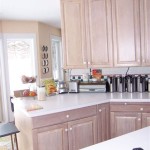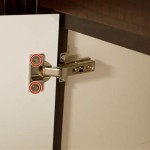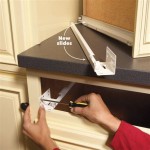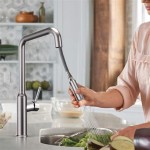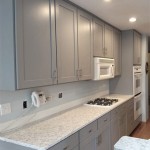Tile for Kitchen: A Comprehensive Guide to IC3 and IC4
Selecting the right tile for a kitchen renovation or new construction project involves understanding various tile categories, performance characteristics, and aesthetic qualities. Among the technical specifications used to classify tile performance, abrasion resistance is a crucial factor, particularly for high-traffic areas like kitchens. The Porcelain Enamel Institute (PEI) rating, often referred to as the "wear rating," provides a standardized measure of a tile’s resistance to surface abrasion. This guide focuses on two PEI ratings particularly relevant to kitchen applications: IC3 and IC4, exploring their properties, suitability, and overall benefits.
Before delving into the specifics of IC3 and IC4 tiles, it's essential to understand the broader context of the PEI rating system. The PEI rating, numbered from 0 to 5, assesses a tile's ability to withstand surface wear caused by foot traffic, dirt, and cleaning. A higher PEI rating indicates greater abrasion resistance and suitability for heavier traffic areas. PEI ratings are determined through a standardized laboratory test involving rotating abrasive materials against the tile surface. The degree of visible abrasion after a set number of rotations determines the tile's PEI classification.
While the PEI rating is a valuable tool, it shouldn't be the sole determinant in tile selection. Factors such as the specific type of tile (e.g., ceramic, porcelain), the intended use of the space, and aesthetic preferences should also be considered. Furthermore, proper installation and maintenance play a significant role in the longevity and performance of any tile, regardless of its PEI rating.
Understanding IC3 Tiles
IC3-rated tiles are generally suitable for light to moderate foot traffic. They are characterized by their ability to withstand moderate abrasion without significant surface wear. These tiles are commonly used in residential bathrooms, where foot traffic is relatively low and abrasive materials are less prevalent. In some residential kitchen applications, IC3 tiles may be appropriate, but careful consideration of the specific usage and potential for wear is crucial.
The construction and composition of IC3 tiles often involve thinner glazes or less dense bodies compared to higher-rated tiles. This makes them more susceptible to scratching and wear under heavy use. While IC3 tiles can offer cost savings compared to IC4 or IC5 tiles, the potential for premature wear in a high-traffic kitchen environment may outweigh these initial savings. Consider the long-term costs associated with potential replacement or repair before opting for IC3 tiles in a kitchen setting.
Visually, IC3 tiles can offer a wide range of styles, colors, and patterns. They are often available in both ceramic and porcelain varieties. However, the lower abrasion resistance often translates to a shorter lifespan in areas with high foot traffic and exposure to abrasive substances like dirt, sand, and kitchen spills. Regular cleaning and maintenance are essential to preserve the appearance and integrity of IC3 tiles in any application, but particularly in a kitchen.
Specific applications where IC3 tiles may be suitable in a kitchen could include backsplash areas, where they are primarily decorative and experience minimal foot traffic. They might also be considered for flooring in kitchens with exceptionally low foot traffic, such as in a vacation home used infrequently. However, for the main kitchen floor in a typical household, an IC4 rating is generally recommended for enhanced durability.
Exploring IC4 Tiles
IC4-rated tiles are designed to withstand moderate to heavy foot traffic. They exhibit a higher degree of abrasion resistance compared to IC3 tiles, making them a more suitable choice for residential kitchens, hallways, and other areas with moderate to heavy use. The increased durability of IC4 tiles translates to a longer lifespan and reduced likelihood of scratching, chipping, or other forms of surface wear.
The manufacturing process for IC4 tiles typically involves a denser body and a thicker, more durable glaze compared to IC3 tiles. This results in enhanced resistance to abrasion, staining, and chemical damage. The increased density also makes IC4 tiles less porous, reducing the likelihood of water absorption and potential damage from spills. This is a crucial consideration in a kitchen environment, where spills are common.
IC4 tiles offer a balance between durability, cost-effectiveness, and aesthetic versatility. They are available in a wide range of materials, including ceramic and porcelain, as well as a diverse selection of colors, patterns, and textures. This allows homeowners to achieve their desired aesthetic while ensuring the tile is capable of withstanding the demands of a busy kitchen. The investment in an IC4 tile is generally considered worthwhile due to its enhanced longevity and reduced maintenance requirements compared to lower-rated tiles.
For kitchen flooring, IC4 tiles are widely recommended as a practical and durable option. Their resistance to abrasion and staining makes them well-suited to withstand the daily wear and tear associated with cooking, cleaning, and general household activity. They can also be used effectively on kitchen backsplashes and walls, providing a durable and aesthetically pleasing surface that is easy to clean and maintain.
Comparing IC3 and IC4: Key Considerations for Kitchen Use
The primary difference between IC3 and IC4 tiles lies in their abrasion resistance. IC4 tiles offer superior durability and are better suited for areas with moderate to heavy foot traffic, such as kitchen floors. IC3 tiles, while suitable for lighter traffic areas, may show signs of wear more quickly in a kitchen environment. When deciding between the two, consider the level of foot traffic in your kitchen, the potential for spills and abrasive substances, and the desired lifespan of the tile.
Cost is another factor to consider. IC3 tiles are generally less expensive than IC4 tiles. However, the long-term cost of replacing worn-out IC3 tiles may exceed the initial savings. Investing in higher-rated tiles, such as IC4, can be a more cost-effective solution in the long run, particularly for high-traffic areas like the kitchen.
Aesthetics should also play a role in the decision-making process. Both IC3 and IC4 tiles are available in a wide range of styles, colors, and patterns. However, the durability of IC4 tiles allows for a greater degree of flexibility in design choices, as homeowners can be confident that the tile will maintain its appearance even under heavy use. The wider availability amongst materials may also encourage homeowners to consider an IC4 rated tile.
Beyond the PEI rating, the specific type of tile material (ceramic vs. porcelain) also influences its overall performance. Porcelain tiles, known for their density and low water absorption, generally offer superior durability compared to ceramic tiles, regardless of their PEI rating. Therefore, when selecting tiles for a kitchen, considering the material composition in conjunction with the PEI rating is crucial. A porcelain tile with an IC3 rating may still outperform a ceramic tile with the same rating, depending on the specific manufacturing process and intended use.
For kitchen backsplashes, the PEI rating is less critical since they experience minimal foot traffic. However, resistance to staining and ease of cleaning are important considerations. Both IC3 and IC4 tiles can be suitable for backsplash applications, provided they are properly sealed and maintained. The aesthetic qualities of the tile will likely be the primary factor in this context.
Ultimately, the optimal choice between IC3 and IC4 tiles for a kitchen depends on a careful assessment of the specific needs and priorities of the homeowner. While IC3 tiles may be suitable for certain limited applications, IC4 tiles generally offer a more durable and practical solution for kitchen floors and other high-traffic areas. Prioritizing durability and long-term performance can save time, money, and effort in the long run.

I Cocci Thompson Tile Stone

I Cocci Thompson Tile Stone

Refrigerator With Ice Makers What You Should Know

Shower Wall Panels Silver Travertine Bathroom City
Misty Plumage Ii
Bluebird Glass Mosaic
Untitled

Buy Showerwall Laminate Pro Phantom Marble Sw68 2440 X 579 Egmdf Wood Flooring Kent

Buy Showerwall Laminate Pro Positano Grey Terrazzo Sw76 2440 X 579 Egmdf Wood Flooring Kent

Buy Showerwall Laminate Pro Lightning Marble Sw51 2440 X 579 Egmdf Wood Flooring Kent
Related Posts

